AHST Midterm Review
1/38
There's no tags or description
Looks like no tags are added yet.
Name | Mastery | Learn | Test | Matching | Spaced |
|---|
No study sessions yet.
39 Terms
Da Vinci — Vitruvian Man, c. 1490 :
Renaissance ideal of human proportions and geometry.

Donatello — Feast of Herod, 1425 :
Early Renaissance relief sculpture using linear perspective.
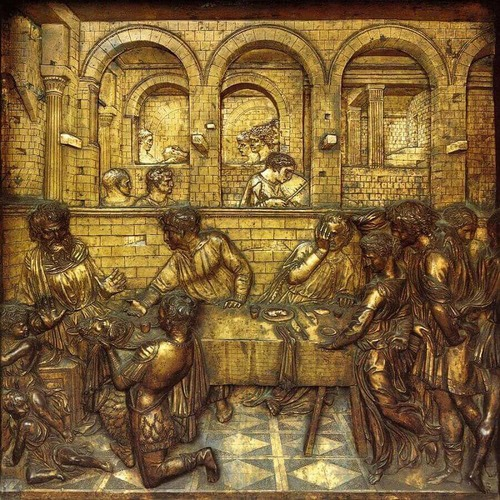
De’Rossi — The Chastity of Joseph (Temptation of Joseph by Potiphar’s Wife), c. 1526 :
Baroque marble panel depicting Joseph resisting temptation.
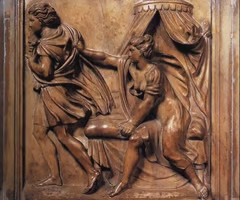
Brunelleschi — Duomo, 1480, Florence, Italy :
Engineering marvel of Renaissance architecture; first large dome since antiquity.
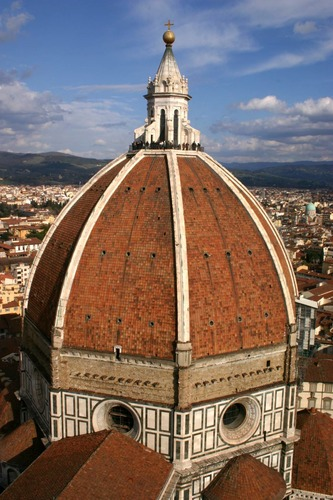
Raphael — School of Athens, 1509–1510 :
Fresco symbolizing philosophy; features Plato, Aristotle, and classical thinkers.
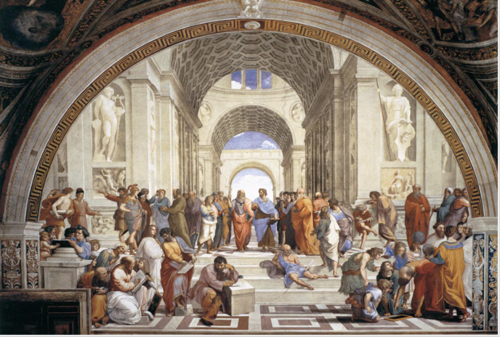
Sister Nelli — The Last Supper, before 1568 :
One of the earliest known large-scale Last Suppers by a woman artist.

Donatello — David, c. 1428–1432 :
First freestanding nude statue of the Renaissance; symbol of Florence.

Del Verrocchio — David, c. 1465–1470 : Bronze David showing youthful energy and pride. 📷
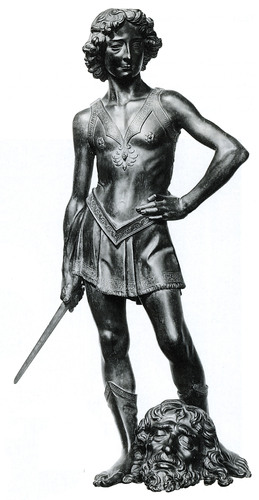
Michelangelo — David, 1500–1504 :
Monumental marble symbol of civic virtue; High Renaissance ideal

Mantegna — Dead Christ, c. 1501 :
Foreshortened Christ emphasizing emotion and perspective mastery.

Botticelli — Birth of Venus, c. 1482 :
Classical mythological painting celebrating ideal beauty.

Van Eyck — Portrait of Giovanni Arnolfini and His Wife, 1434 :
Oil painting rich in symbolism and meticulous realism.
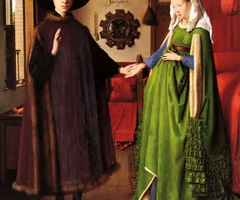
Bronzino — An Allegory with Venus and Cupid, c. 1545 :
Mannerist allegory of love and deceit.
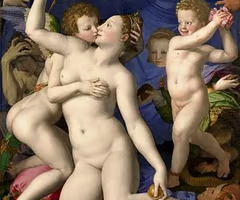
Mosque-Cathedral of Córdoba, 785–1523 :
Islamic-Christian hybrid structure; signature red-white arches.
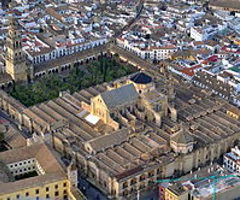
Bernini — Colonnades of St. Peter’s, 1656–1660 :
Symbolic architectural “arms” embracing worshippers.
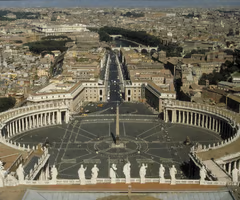
Borromini — San Carlo alle Quattro Fontane, 1638–1646 :
Baroque architecture with dynamic geometry and movement.

Bernini — Ecstasy of Saint Teresa, 1647–1652 :
Baroque sculpture dramatizing spiritual experience through movement and light.
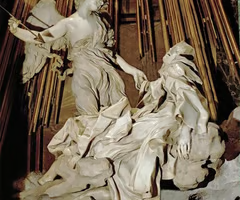
Caravaggio — Self-Portrait as the Sick Bacchus, 1595 :
Realist self-portrait with earthy tones and illness metaphor.

Caravaggio — Narcissus, 1597–1599 :
Baroque chiaroscuro and mythological self-reflection theme.
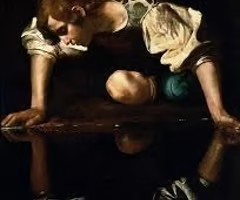
Velázquez — Old Woman Frying Eggs, 1618 :
Spanish Baroque realism; study of light and texture.
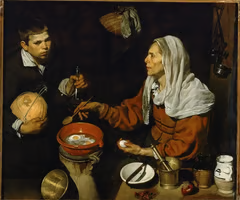
Velázquez — Las Meninas, 1656 :
Complex perspective and self-reference; royal portrait masterpiece.

Paul Rubens — Elevation of the Cross, 1610 :
Baroque dynamism and muscular movement; triptych format.

Paul Rubens — Diana Returning from the Hunt, 1615–1616 :
Idealized mythological figures; sensuality and color.
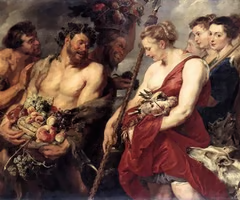
Fragonard — The Swing, 1767 :
Rococo painting symbolizing love and flirtation.
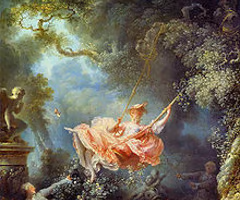
Carriera — Young Lady with a Parrot, 1730 :
Rococo pastel portrait; elegance and femininity.
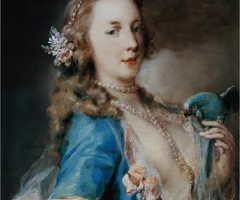
Jacques-Louis David — Oath of the Horatii, 1784 :
Neoclassical moral virtue through rigid geometry.

Jacques-Louis David — Death of Marat, 1793:
Revolutionary martyrdom; stark realism.

Vigée Le Brun — The Queen with Her Children, 1787 :
Humanizing royal portrait of Marie Antoinette.
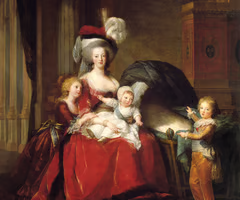
Vigée-Lebrun — Self-Portrait with Daughter Julie, 1789 :
Warm mother-daughter intimacy; self-promotion as moral woman.
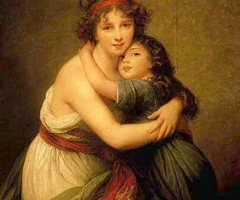
Girodet-Trioson — Portrait of Jean-Baptiste Belley, 1797 :
Revolutionary portrait of Black political figure; neoclassical setting.
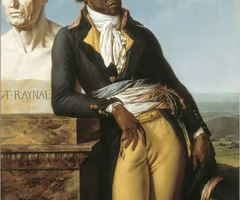
Jean Gros — Napoleon at the Pesthouse at Jaffa, 1804 :
Romanticized depiction of Napoleon’s compassion amid plague.
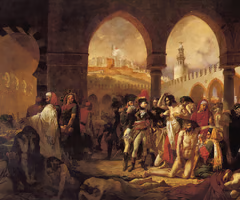
Delacroix — Liberty Leading the People, 1830 :
Romantic symbol of revolution; allegorical liberty.
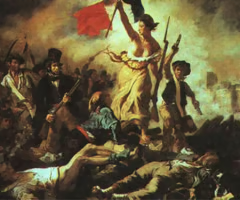
Géricault — The Raft of the Medusa, 1818–1819 :
Tragic shipwreck scene; political and emotional power.

Goya — Charles IV of Spain and His Family, 1800–1801 :
Satirical royal portrait; early modern psychological realism.
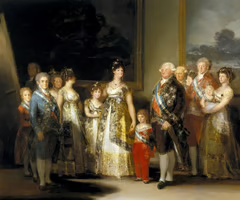
Goya — The Third of May, 1808 (painted 1814) :
Anti-war masterpiece depicting Spanish resistance.
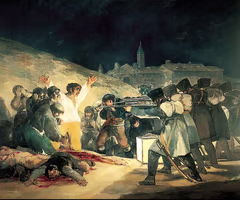
Donatello — David (c. 1428–1432) AND Michelangelo — David (1500–1504) :
Both represent civic ideals of Florence. Donatello’s bronze is youthful and relaxed (early Renaissance); Michelangelo’s marble is monumental and idealized (High Renaissance). Contrast between sensuality and heroic perfection.
Caravaggio — Judith Beheading Holofernes (1598–1599) AND Gentileschi — Judith Slaying Holofernes (1620) :
Both Baroque depictions of biblical violence. Caravaggio’s naturalism and chiaroscuro create realism; Gentileschi’s feminist retelling emphasizes female strength and revenge.
Velázquez — Las Meninas (1656) AND Goya — Charles IV of Spain and His Family (1800–1801) :
Comparison of royal portraiture. Velázquez uses complex perspective and subtle flattery; Goya’s composition is more psychological and critical of monarchy.
Louis David — Oath of the Horatii (1784) AND Angelica Kauffmann — Cornelia Pointing to Her Children as Her Treasures (1785) :
Neoclassical moral exemplars. David’s rigid masculinity contrasts with Kauffmann’s moral motherhood, reflecting Enlightenment gender ideals.